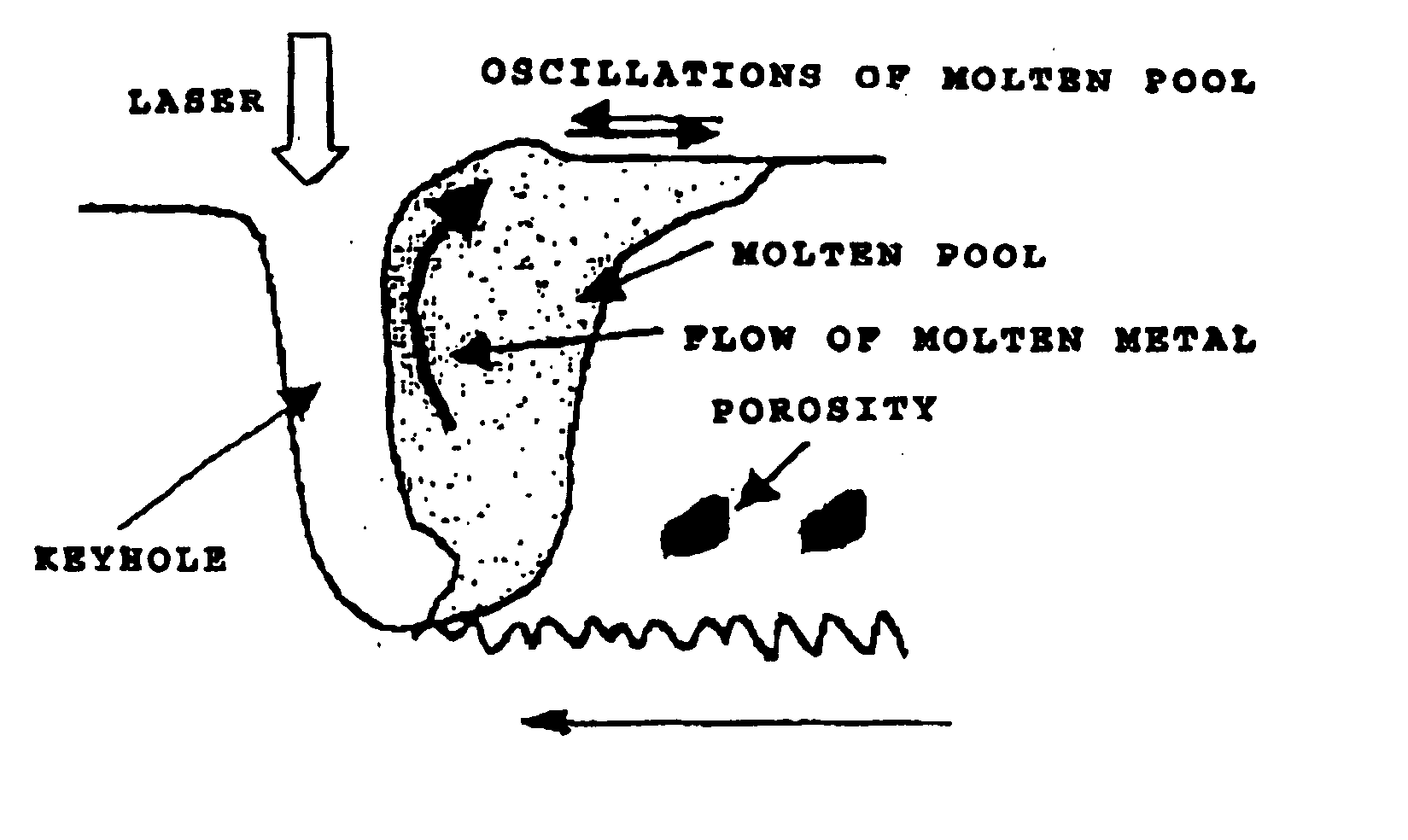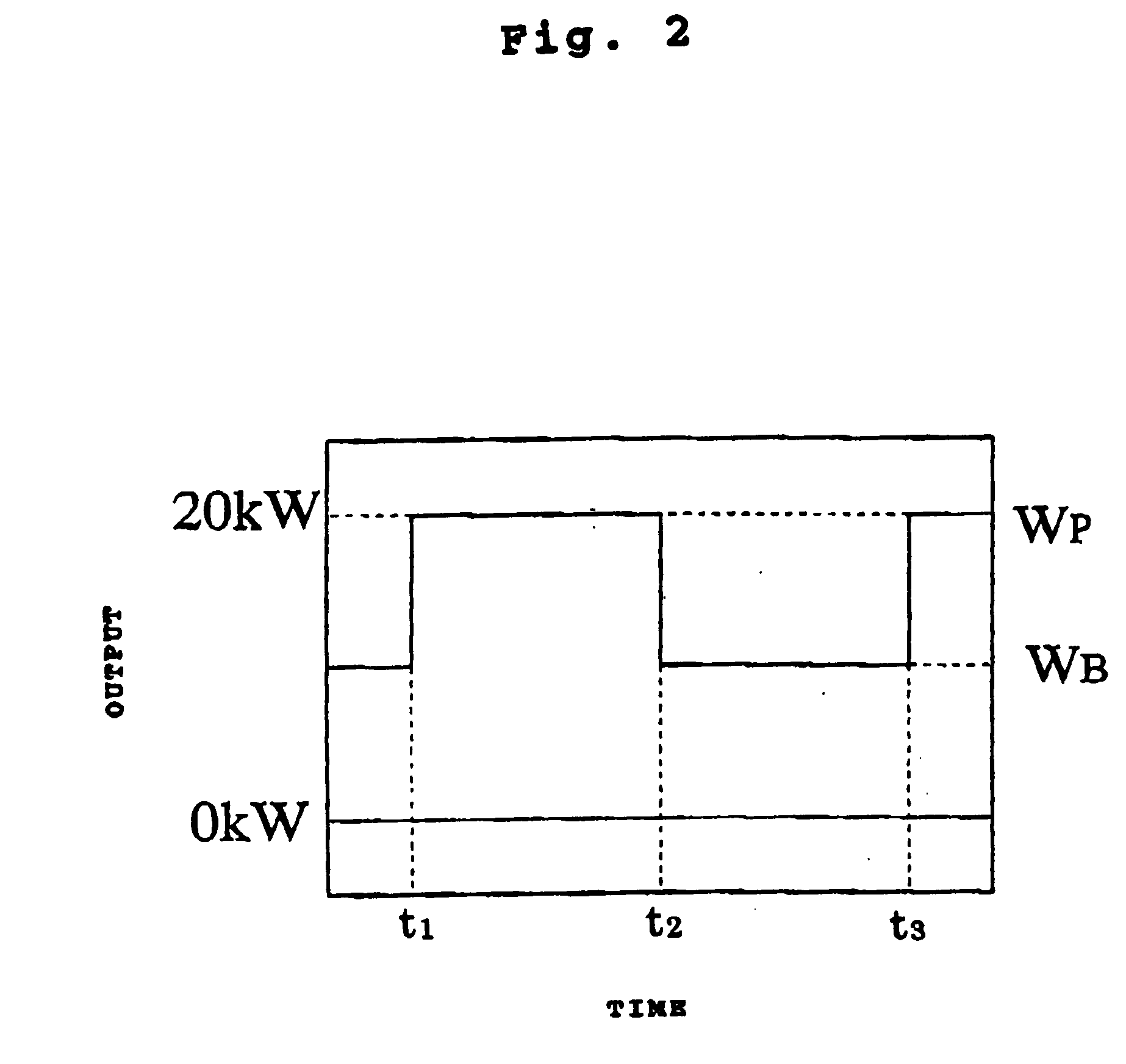Laser welding processed
a technology of laser welding and processing, which is applied in the direction of welding apparatus, metal-working equipment, manufacturing tools, etc., can solve the problems of increasing the possibility of causing defects such as porosities, blowholes and cracks, and the frequency of output variations is not sufficient to prevent defects, so as to achieve the effect of efficiently preventing blowholes and cracks, and reducing the possibility of causing defects
- Summary
- Abstract
- Description
- Claims
- Application Information
AI Technical Summary
Benefits of technology
Problems solved by technology
Method used
Image
Examples
example 1
[0045] Partial penetration welding was performed on a steel plate SM490C which is for general welded structure by using a pulse-modulated CO.sub.2 laser beam. A He gas was used as a shielding gas, and side-shielding was perform d at a flow rate f 50 L / min.
[0046] A r ctangular waveform as shown in FIG. 2 was us d for the output waveform; and the peak output WP was set to 20 kw, and the base output WN was set to 12 kW. Two types of duty cycles, namely a 50% duty cycle and a 70% duty cycle, were selected; and bead-on-plate welding was performed at various frequencies. Weld-defeat detection was performed by x-ray examinations with radiation emitted perpendicular to a laser beam axis and a weld line from a sideface of a weld test piece. The ratio (%) of the sum of detected defect areas to the area of molten metal is defined as a defect occurrence ratio Pr, and defect suppression effects were evaluated according to Pr. FIG. 5 shows the results of Pr m asurements performed at various frequ...
example 2
[0049] Partial penetration welding was p rformed on a steel plate SM490C which is for general welded structure by using a pulse-modulated CO.sub.2 laser beam. A He gas was used as a shielding gas, and side-shielding was performed at a flow rate of 50 L / min.
[0050] A trapezoidal waveform as shown in FIG. 4 was used for the output waveform; and the peak output WP war set to 20 kW, the bass output WB was set to 8 kw, and the rise time tu and the fall time td were varied. Bead-on-plate welding was performed with a 50% duty cycle. The penetration depth at this case was about 20 mm.
[0051] Weld-defect detection was performed by x-ray radiographies with radiation emitted perpendicular to a laser beam axis and a weld line from a sideface of a weld test piece. The ratio (%) of the sum of d tected defect areas to the area of molten metal is defined as a defect occurrence ratio Pr, and defect suppression effects were evaluated according to Pr.
[0052] FIG. 6 shows influences of the pulse rise time...
PUM
| Property | Measurement | Unit |
|---|---|---|
| flow rate | aaaaa | aaaaa |
| frequency | aaaaa | aaaaa |
| frequency | aaaaa | aaaaa |
Abstract
Description
Claims
Application Information
 Login to View More
Login to View More - R&D
- Intellectual Property
- Life Sciences
- Materials
- Tech Scout
- Unparalleled Data Quality
- Higher Quality Content
- 60% Fewer Hallucinations
Browse by: Latest US Patents, China's latest patents, Technical Efficacy Thesaurus, Application Domain, Technology Topic, Popular Technical Reports.
© 2025 PatSnap. All rights reserved.Legal|Privacy policy|Modern Slavery Act Transparency Statement|Sitemap|About US| Contact US: help@patsnap.com



